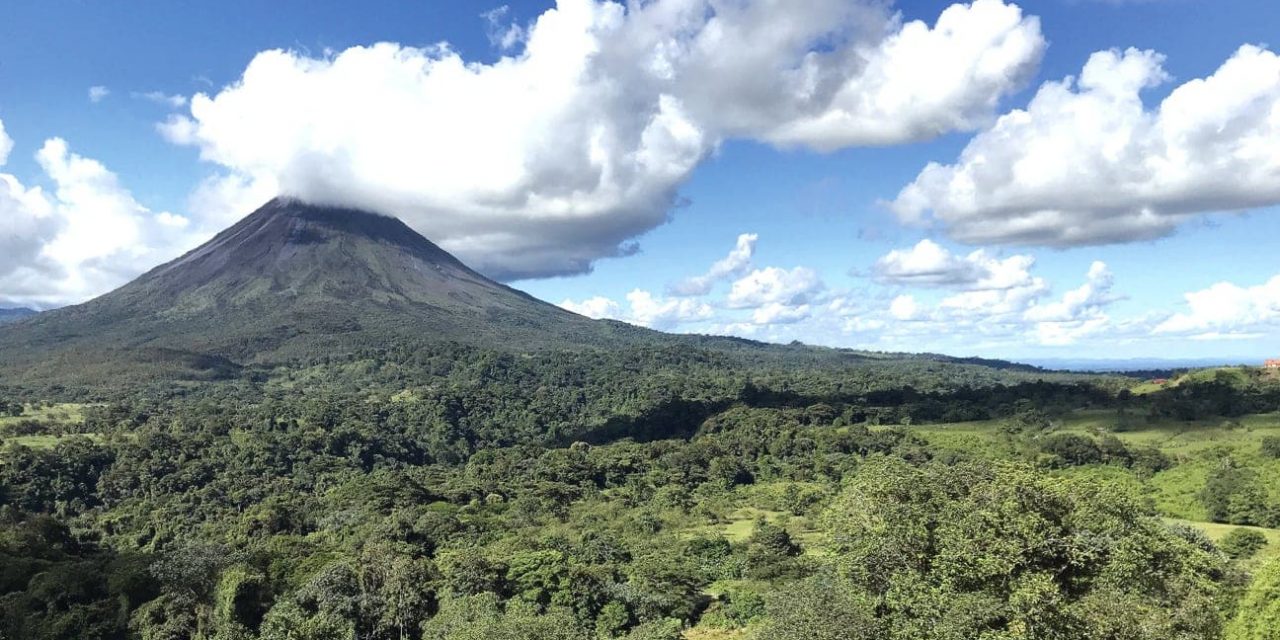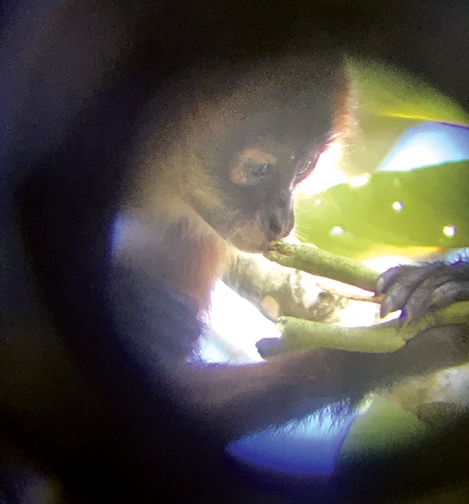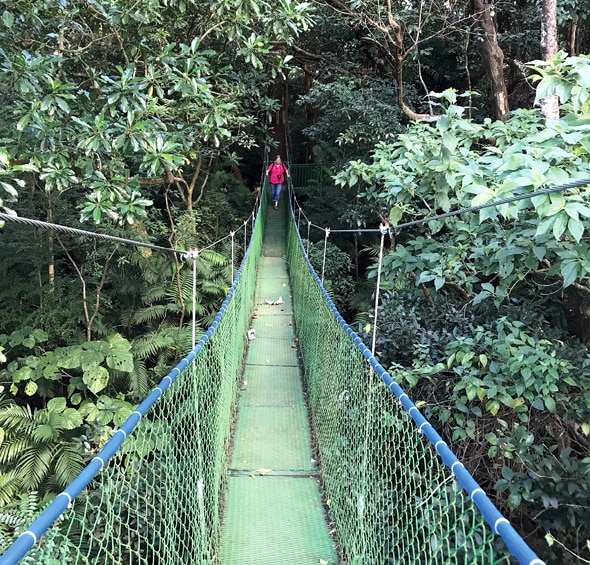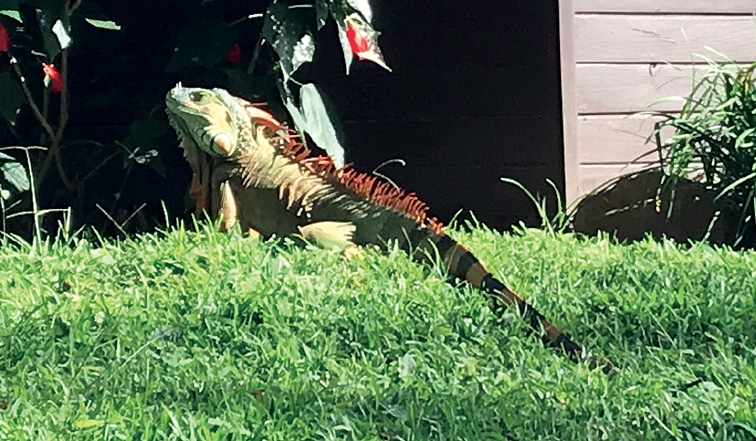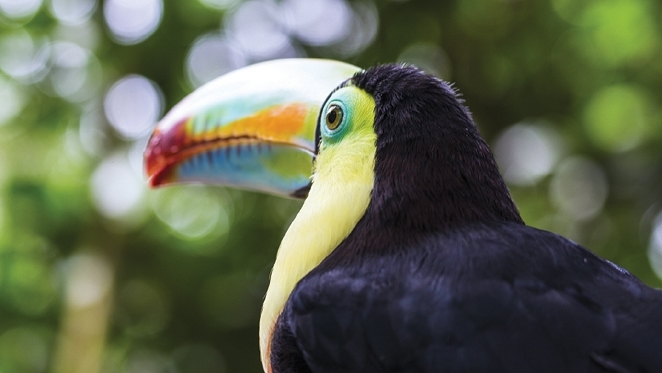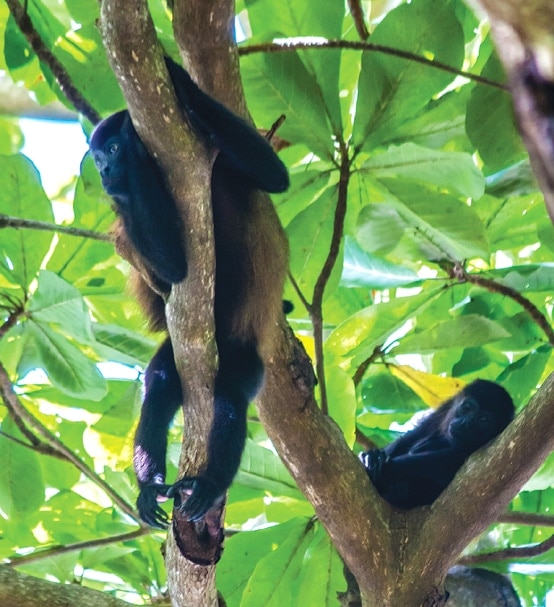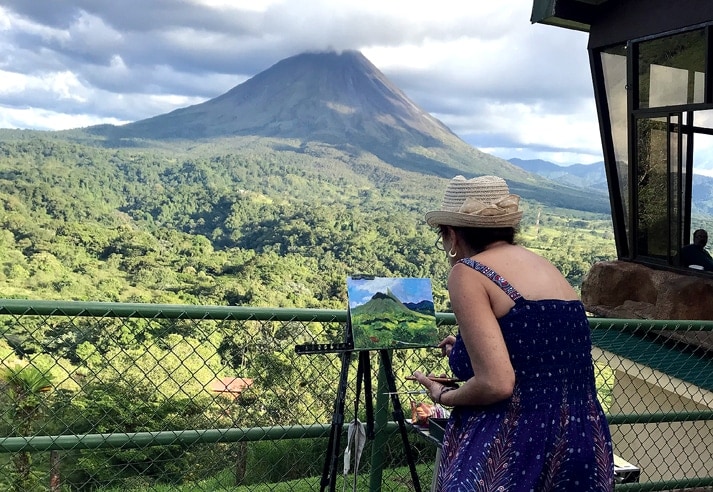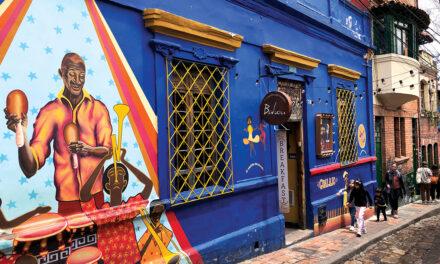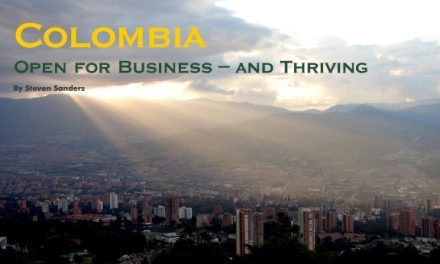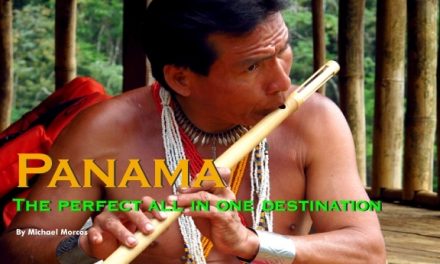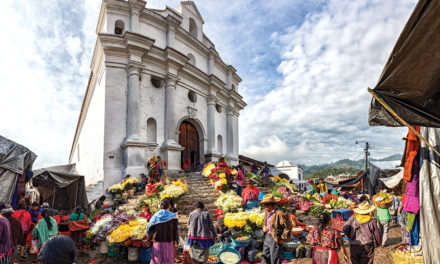Costa Rica
Listening to the Sounds of the Rainforest
Article and photography by Jennifer Merrick
After an adventure-filled day exploring sites around Arenal Volcano in Costa Rica, we all felt a little dozy on the way back to our resort for the evening. So, we were almost stunned when we found ourselves pulled over on the shoulder of a main road. Had the vehicle broken down? Flat tire?
“Howler monkeys,” announced our unflappable guide, Rhyan Cruz. He grabbed his ever-present telescope and led us out of the van. Sure enough, there were a troop of primates balancing on the hydro wires and bouncing around in the trees that lined the road. The monkeys lived up to their name, vocalizing loud, deep, barking-like bellows. Rhyan set up his telescope, and we did our best to get close-up shots of the playful creatures. But like monkeys do, they kept moving as soon as the focus was right.
Howler monkeys are one of 250 species of mammals in Costa Rica, a country with one of the highest biodiversity in the world. Located in Central America above Panama, over a quarter of this small country the size of West Virginia, is protected wilderness.
Though plentiful, some wildlife could be hard to spot without someone like Rhyan, who like all guides in Costa Rica had a license and extensive training. With a degree in eco-tourism and over 18 years of experience, Rhyan not only had a sharp eye but an expert ear.
“We usually hear wildlife before we see them,” he told us. Howler monkeys were obvious, but others less so. He explained that the sound of the white-face monkey came from the throat. “Caww,” he mimicked.
“And spider monkeys sound like a rusty saw.”
We saw these acrobatic monkeys, named for their spider-like appearance when they hang by their tails from trees, earlier that day at Mistico Arenal Hanging Bridges Park. This 600-hectare property featured 16 bridges – 10 fixed and 6 hanging – and led us through the cloud forest high above the jungle floor.
Back in the van after saying adiosto the monkeys, we headed to Buena Vista Lodge, located in the more remote northern part of the country near the border of Nicaragua. Situated on the edge of the Rincon de la Vieja National Park, this eco-property offered plenty of opportunities to see and hear wildlife.
The next day, as soon as I opened the door of our basic but comfortable room, I was greeted by a large iguana basking in the sun. And as I continued up to breakfast, several unusual-looking creatures I had never seen before crossed in front of my path. They had striped tails that stood upright and a long, pointed snout for a nose.
“Coatis,” I was told later. These tree-climbing mammals were as common as racoons were to us.
Activities at Buena Vista Lodge ranged from ziplining through the rainforest and mountain water slide to horseback riding and hiking. I opted for horseback riding, even though I had little equestrian experience; and I was grateful that my gentle horse was calm because I certainly wasn’t. But after about ten minutes of trying not to hyperventilate, I relaxed and looked around. Rewarded with incredible views of lush valleys, I breathed deeply and even loosened my white-knuckled grip on the reigns to take some pictures.
Rhyan was doing what he did best –listening. At one point, he motioned for us to stop and pointed at the bushes. And there was the most extraordinary bird I had ever seen in the wild – a Yellow-throated Toucan.
“I heard it,” he told us later. “Toucans crunch.”
Besides the wildlife, what impressed me most about the Buena Vista Lodge was its commitment to sustainability. In the 1980s, the property was a cattle farm, and few had even heard of the word ‘eco-tourism’.
“To be honest, people thought the owners were crazy at the beginning,” said Medardo Moscoso, the environment director at the lodge. “How could there be a hotel in such a remote place?” But the owners let some of the pastures return to the forest and constructed a few stone buildings.
“And people started coming and were impressed to see the wildlife,” said Medardo. Approximately 70 percent of the properties 2000 acres is being reforested, and the remaining was used as pastures.
Mecardo explained that they produced much of what the resort needed themselves–vegetables, meat, dairy, eggs and even the soap in the 76 rooms. The soap was made from the waste cooking oil from the kitchen and was just one of the environmental initiatives he managed.
“You know the food you’ve been eating was cooked with farts?”
“No idea,” I answered, glad I had finished my lunch.
We were shown the lodge’s ‘biodigestor’. This contraption, the first of its kind in Costa Rica, fermented manure, producing heat that was piped through the resort. Other projects included working with native species of bees and monitoring trails with camera traps to ensure activities had limited impact to wildlife. Medardo created a ‘sustainability tour’ for guests to see all their innovative initiatives.
There was a lot to explore on our own at the resort as well. A 35-minute hike or 15-minute tractor ride away was the beautiful Pacayas Waterfall. A little farther were the thermal hot springs, where we soaked away tired muscles in its natural pools and slathered on mineral muds that softened the skin.
All around was lush vegetation and exotic birds, butterflies and creatures like the agoutis that looked like a pet guinea pig only with long legs. There were sounds, too, but I’d need a few more lessons from our guide, Rhyan, before I could tell you what I was listening to.
www.visitcostarica.com
www.buenavistadelrincon.com

